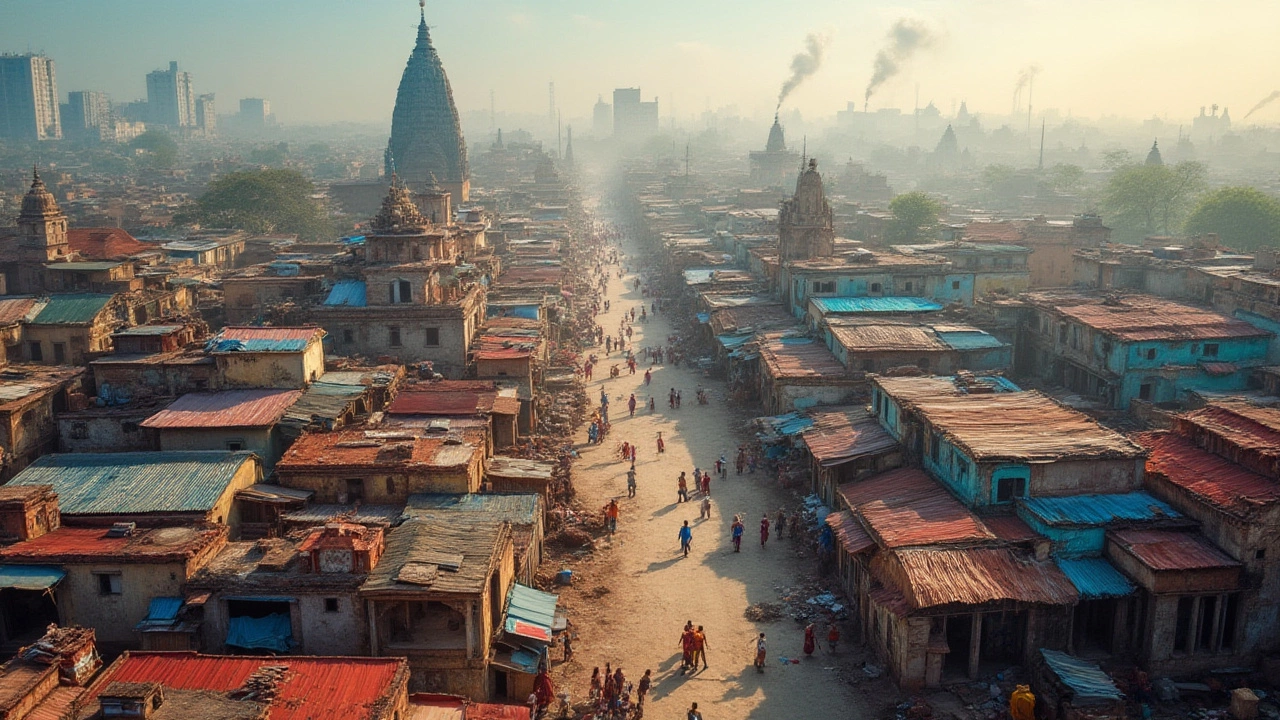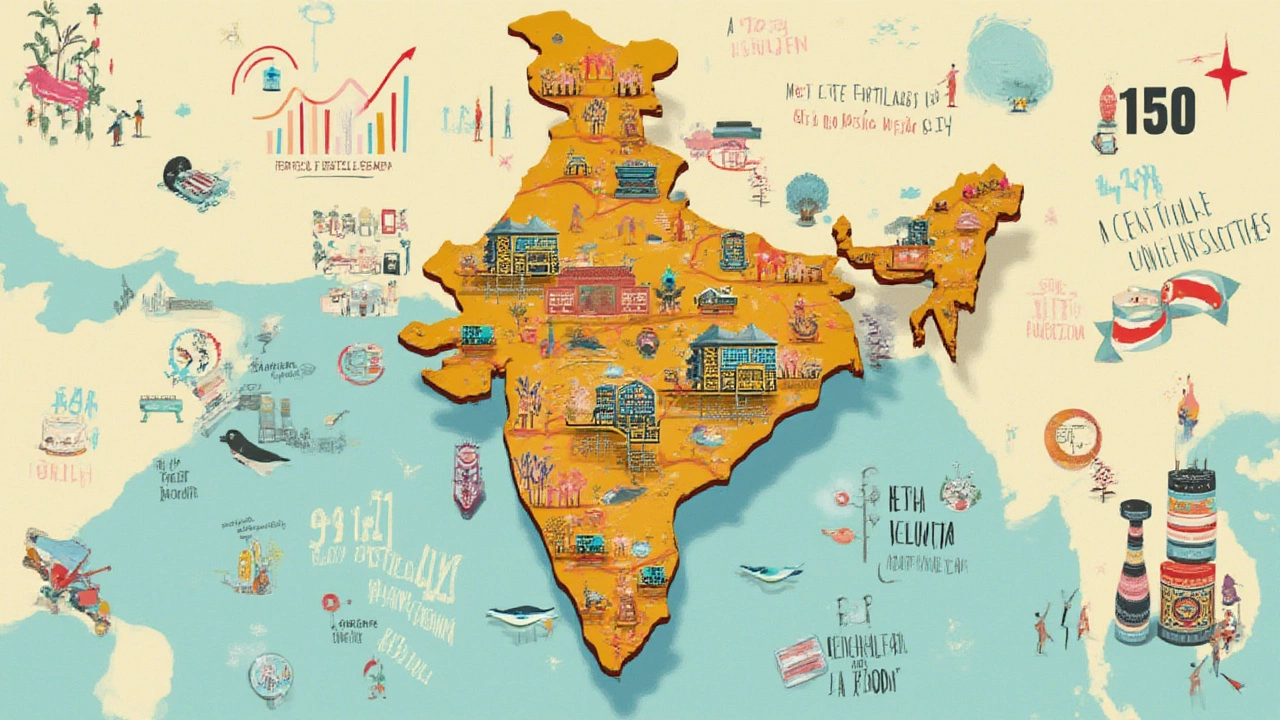
Walk down any busy shopping street, big city market, or scroll through online stores worldwide, and there’s a high chance you’re seeing products made in India’s textile factories. From luxury silks and handloom wonders to everyday T-shirts, the country’s textile muscle flexes across the globe. But how many textile manufacturing companies actually exist in India? The question sounds simple—until you dig into the numbers, which tell a story that’s almost as colourful as the fabrics themselves. Buckle up: you’re about to slip behind the scenes of an industry with roots deeper than Bollywood and cricket put together.
The Sheer Scale: Counting Textile Companies in India
Trying to pin down the total number of textile manufacturing companies in India is a bit like counting the grains of sand at Goa’s beaches—there are loads, and the number keeps shifting. Data from the Ministry of Textiles and the Confederation of Indian Textile Industry (CITI) put the current figure at over 45,000 registered textile companies by July 2025. Now, that’s just the registered ones. The real figure, when you count small unregistered units, family-run workshops in villages, and new startups popping up almost weekly, pushes estimates easily beyond 105,000 units engaged in textile and apparel manufacturing across the country.
Why so many? India’s textile industry is built on centuries of legacy. This is where cotton was spun back when the Greeks were still figuring out togas. The country churns out everything from sarees in Surat, bed linen in Panipat, denim in Ahmedabad, hosiery in Tirupur, to high fashion garments in Noida. Each cluster, city, or even small town has its own flavour. The backbone consists of both gigantic mills with thousands of workers and tiny family shops running at the village level.
If you look at official stats for 2025, according to the Indian Brand Equity Foundation (IBEF), there are about 3,500 spinning mills, nearly 2,700 weaving units, over 9,000 garment manufacturers, and 20,000+ home textile and handloom weaving units that have filed with regulatory bodies. However, if you break down these numbers by type, things get pretty interesting:
| Type of Textile Manufacturing Unit | Estimated Number (2025) |
|---|---|
| Spinning Mills | 3,500 |
| Weaving Units | 2,700 |
| Knitting & Hosiery | 8,000 |
| Garment Manufacturers | 9,000 |
| Handloom Units | 20,000+ |
| Processing Houses | 1,700 |
| Total Registered Units | 45,000+ |
It’s worth highlighting that these are mostly large-to-medium businesses. If you factor in the micro and small-scale sector—like tailor shops, family looms, and co-operatives—the figure nearly triples according to insights from the Federation of Indian Chambers of Commerce and Industry (FICCI). Most of these players aren’t on government books at all, but they employ millions. The sheer spread of the industry is both a strength and a headache, especially for anyone trying to count every last enterprise.
Now, if you ever hear someone say “the Indian textile sector is massive,” this is what they mean: it’s the second largest employment source in the country, right after agriculture. As of 2025, the textile and apparel industry is providing jobs for around 45 million people directly, and over 100 million indirectly, including allied sectors like cotton farming, dyeing, logistics, and retailing. Think about that next time you put on your favourite shirt.
The official count is always a moving target, partly because the government and industry associations update their databases every quarter. New companies spring up, especially as global demand for “Made in India” grows, and small units might merge, split, go underground, or close up shop. That’s why when someone asks, “How many textile manufacturing companies are there in India?” the most accurate answer is: at least 45,000 registered, likely more than 100,000 if you count everyone making fabric, thread, yarn, or finished clothes anywhere in the country.

Why India’s Textile Industry Keeps Growing
There’s more to India’s textile boom than just big numbers. The country is blessed with a near-perfect mix of climate, cotton and jute fields, centuries-old craft knowledge, and millions of skilled hands. But that’s not the only reason so many textile manufacturing companies in India are thriving right now.
Start with exports: in 2024, India exported roughly US$ 42 billion worth of textiles and apparel, according to the Directorate General of Foreign Trade. Buyers in the US, EU, the Middle East, and even new markets in Latin America are making Indian suppliers a go-to for everything from branded denim and T-shirts to bedsheets and technical textiles. Flip a branded label next time you’re in a store in Sydney or London—there’s a fair shot it’ll read “Made in India.”
Government support is another big driver. Over the last few years, the Indian government has launched several incentive schemes: the Production Linked Incentive (PLI) scheme, Mega Textile Park incentives, relaxed exports rules, and lower compliance costs for MSMEs (Micro, Small, and Medium Enterprises). These have nudged thousands of small-time weavers and manufacturers to formalize and scale up.
Talk to entrepreneurs in places like Tirupur, Ludhiana, or Surat, and you’ll hear real stories—of families starting with a single loom or sewing machine who now run bustling factories exporting tonnes of fabric each month. Technology has also made a huge difference. Computer-controlled looms, digital dyeing, automated cutting, and AI-powered quality checks aren’t science fiction here—they’re yesterday’s news in some of these modern units.
And here’s a fact you don’t hear every day: Indian textile firms are increasingly going green. With growing global demand for sustainable clothing, many companies now invest in organic cotton farming, water-saving dyeing practices, and solar-powered plants to shave costs and shrink their carbon footprints. Over 1,000 textile manufacturing units in India are now officially GOTS (Global Organic Textile Standard) certified—one of the highest rates worldwide.
Wages and labour availability also play a part. Many Indian states have trained textile workers on tap, often with access to local co-operatives or government-subsidized training programs. This means startups can scale quickly, and larger giants can expand almost overnight. Factor in India’s growing e-commerce boom, with platforms like Flipkart and Amazon India supporting thousands of textile SMEs, and you’ve got an industry that’s always in motion.
If you’re wondering where all these companies are based, here’s a quick snapshot:
- Tamil Nadu—think spinning and garment hubs like Coimbatore, Tirupur, Erode.
- Gujarat—king of cotton, denim, synthetic textile mills.
- Punjab—woolens and hosiery, especially around Ludhiana.
- Maharashtra—fabrics, yarn, ready-made garments.
- West Bengal and Uttar Pradesh—home textiles, silk, jute, traditional crafts.
- Rajasthan—block printing, dying, decorative home textiles.
Each state has its own mix, with dozens of clusters where hundreds of factories can be found side by side. No wonder the numbers keep climbing.

What Makes Indian Textile Manufacturing Stand Out?
With so many players in the game, what sets Indian textile manufacturing apart from competition in places like China, Bangladesh, or Vietnam? The answer isn’t just about low cost—it comes down to diversity, flexibility, and scale.
Let’s start with the diversity card. Where else can you find power looms and centuries-old handloom techniques in the same city? India’s industry isn’t just about mass production. Sure, major exporters pump out high-volume basics for global retail giants, but the country also masters niche luxury markets. Want hand-embroidered saris, silk rugs, or custom ikat prints for a New York boutique? India’s artisans can deliver to spec, and often at lower minimum order quantities than foreign rivals.
The flexibility built into the system helps Indian companies ride out sudden demand swings. Many garment companies can shift from making T-shirts to track pants to dresses overnight if a big order comes in. Small and mid-sized units are nimble—they can take on smaller, custom jobs, or scale up when the big contracts land. That’s not as easy in the hyper-automated factories of East Asia.
Technology adoption has definitely jumped since COVID hit, especially in big hubs. Smart factories, robotic fabric cutters, ERP (Enterprise Resource Planning) software, and automated packaging systems let even medium-size companies punch far above their weight. And with India’s gigantic fibre market—second only to China worldwide—the supply chain is right at the doorstep. That slashes costs for both materials and delivery times.
What’s also cool is the country’s embrace of “Make in India” branding. By mid-2025, the number of Indian brands using home-grown fabrics jumped by over 60 percent compared to pre-pandemic times. Young entrepreneurs are launching clothing lines for everything from Gen Z streetwear to eco-friendly bedding, proudly tagging their products “Made in India.” International brands, too, are now sourcing directly from Indian mills, thanks to lower tariffs and clearer regulations.
- Quick tip if you’re looking to start or partner with a textile company in India: Do your homework by region. Each state, or even city, specialises in certain fabric types, techniques, or products. Hook up with local trade associations for leads—they’re often more reliable than just scouring online directories. And always check the company’s export licenses, certifications (like OEKO-TEX, GOTS, BIS), and credibility; a lot of WhatsApp “factories” are just middlemen posing to make a quick buck.
- Another great tip: Watch out for annual industry trade shows—like the India International Textile Machinery Exhibitions (ITME) or Gartex Texprocess India. These are the places to meet real factory owners, see their latest products up close, and spot the tech that’s going to shape the next wave of growth.
No matter what trend you’re tracking—artisanal crafts, digital printing, technical textiles, or all-out factory automation—India’s textile sector is growing, evolving, and shaping up as one of the true global giants for 2025 and beyond. The numbers may keep changing, but the industry’s influence in your daily life isn’t going anywhere anytime soon.